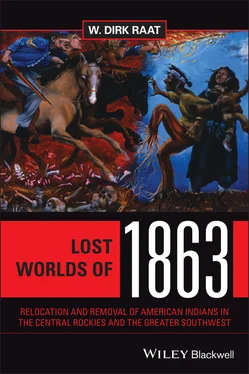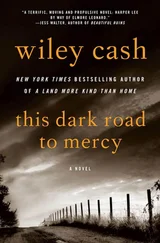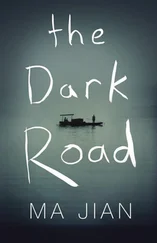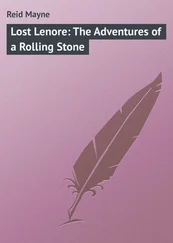1 ...6 7 8 10 11 12 ...29 In the annals of Indian–white relations in southern South America, the Selk’nam Genocide is often recalled. When the Selk’nam was first encountered by Europeans in their homeland of Tierra del Fuego they were a hardy and vigorous people. They lived mostly undisturbed until the late 1800s, when an influx of gold prospectors and sheep ranchers who desired their land started to make intrusions. Bounties were placed on their heads. One hunter boasted that he had received a pound sterling per corpse, redeemable with a pair or two of ears. In a brief time the Selk’nam were reduced from four thousand to around three hundred, and resettled on reservations administered by missionaries. The last speaker of the Selk’nam language died 40 years ago. 12
In North America confrontations with indigenous groups include Canadian authorities and the Inuit in the Arctic as well as the Blackfoot on the Canadian plains and the Innu of Labrador. And, of course, most individuals are familiar with the struggles between Europeans and the Maori of New Zealand, the aboriginal Tasmanians, and the Aborigines of Australia. 13
But if the nineteenth century history of indigenous peoples was one of “struggle,” the twentieth century story bears witness to the idea of “survival.” Even this dichotomy is too simplistic. Not all nineteenth century Indians of the Southwest were victims of the colonizers. Human relationships are complex and some disruptions in native life were due to indigenous factors and pressures from other tribal groups. For example, several White Mountain Apaches and Chiricahuas chose to live on the reservation and adopt the white man’s way of life, and held no brief for Geronimo and the other rebels. Chief Chatto, an accomplished Chiricahua raider, served as first sergeant of Apache scouts during the final campaign against Geronimo. As for the colonizers, the voices of the past are many and many soldiers, like Brigadier General George Crook, held a grudging admiration for Geronimo and his Apache followers. To only consider the indigenous peoples as victims and the colonizers as victimizers is to strip native societies of agency.
If anything, Indian people have found new ways to remain distinctive despite the power of global economies, colonial militaries, and national governments. The “vanishing American” of the late nineteenth century refused to be vanished! Reports by non-indigenous observers of cultural demise and death were wrong in the 1870s, misguided in the 1920s, and overly pessimistic today.
While many groups are losing their languages, many societies have continued to survive even stripped of their language. 14While the boarding school experience from 1878 to 1930 discouraged the use of Indian languages by their pupils, the Navajo, Hopi, Comanche, Sac and Fox code-talkers of World War II revived their tribal tongues. Contemporary technology is being used to initiate language comeback programs, ranging from apprenticeship programs pairing fluent elders with young students to YouTube videos, or native speaker’s language-learning apps for Indian students with iPads. 15For example, the summer of 2013 saw the release of the classic George Lucas “Star Wars” movie that was dubbed by Navajo voice actors, a use of native language designed to appeal to a younger generation. 16Evidently, while the colonial empires that first colonized indigenous societies no longer exist, the native groups have persisted.
No better example of that persistence can be found than that of the Apache painter, muralist, and sculptor Allan Houser. Born in 1914 near Fort Sill, Oklahoma, he was the first of his Chiricahua community to be born outside of captivity. He lived 80 years dying in 1994. He is a likely candidate for the title of “best Southwestern Indian artist of the 20 thcentury.” His materials are varied and diverse—sculpting with marble, bronze, alabaster, steatite, limestone, painted steel, wire, wood; painting in oils, tempera, acrylic, casein, pastels, and watercolors—and his themes are equally varied. His six to nine foot Ga’an statutes reflect the confidence of Apache spiritualism, and his smaller works depict family and everyday life. This is the optimism of the survivalist, not the pessimism of the defeated. 17
This then is a two-part story, of a difficult and often unsuccessful struggle to overcome powerful, outside forces, and the contemporary one of an internal and cultural determination to survive in the face of forces seeking their destruction. From the struggle with surviving have come renewal and regeneration, and this new person called the American Indian.
Part I Slavery and Removal in California and the Far West
1 Lincoln, Free Soil and Frémont The Emancipation Proclamation and Indian Slavery
That on the first day of January, in the year of our Lord one thousand eight hundred and sixty-three, all persons held as slaves within any State or designated part of a State, the people whereof shall then be in rebellion against the United States, shall be then, thenceforward, and forever free .
From Lincoln’s Emancipation Proclamation, January 1, 1863
Free at last, Free at last, Thank God Almighty, Free at Last!
Old Negro Spiritual cited by Martin Luther King in His “I’ve Got a Dream” Speech, Lincoln Square, Washington, on the Centennial of the Emancipation Proclamation, August 28, 1963
We realize that whoever sees us, and no matter what we say to defend ourselves, the white people will think of us as dogs. We want our relatives now imprisoned at the Missouri River [Crow Creek] to remain alive. Last summer we left death behind and with no freedom to do what we wanted, we were like dead men .
Wakandhi Topa [Four Lightning] to Gen. H. H. Sibley, Camp McClellan [Davenport, Iowa], May 18, 1863 1
The pale-faced people [as opposed to their red brethren] are numerous and prosperous because they … depend upon the products of the earth rather than wild game for a subsistence. This is the chief reason of the difference; but there is another. Although we are now engaged in a great war between one another, we are not, as a race, so much disposed to fight and kill one another as our red brethren .
Abraham Lincoln, Meeting with Indian Leaders, March 27, 1863 2
On January 1, 1863, President Abraham Lincoln issued the Emancipation Proclamation. Although popular in parts of the Republican Party and in northern sections of the country where abolitionist sentiment was strong, the Proclamation was limited in scope and only one event in the long history of emancipation in the United States. For example, it did not apply to those slave states in the border area that were loyal to the Union, and did not affect those parts of the Confederacy under Union control. It did, however, transform the character of the war. One section of the Proclamation read that “I further declare … that such persons [freed slaves] will be received into the armed service of the United States to garrison forts, positions, stations, and other places, and to man vessels of all sorts in said service.” 3The liberated would become liberators, and the enlargement of the Union Army would expand the domain of freedom.
Concerning the history of emancipation, as early as 1784 Thomas Jefferson sponsored a bill in the Continental Congress that would ban slavery from expanding into the western territories (words that were later incorporated into the Northwest Ordinance of 1787 preventing slavery north of the Ohio River). The First and Second Confiscation Acts passed by Congress in 1861 and 1862 allowed Union Armies to confiscate slaves as prizes of war and banned slavery in all places where the National Government has jurisdiction. 4
In another example, on August 30, 1861, Major General John C. Frémont, a recent appointee as Commander of the Department of the West, in his attempt to drive the Confederate forces from Missouri, issued a proclamation indicating that the property of secessionists would be confiscated and the slaves of rebels emancipated. By November, Lincoln had revoked Frémont’s Missouri Proclamation and relieved him from his command. Lincoln feared that Frémont’s order would push Missouri (and other border states) to the southern cause. 5Finally, after Lincoln’s death the words of Jefferson were finally incorporated into the Thirteenth Amendment to the Constitution of the United States.
Читать дальше












